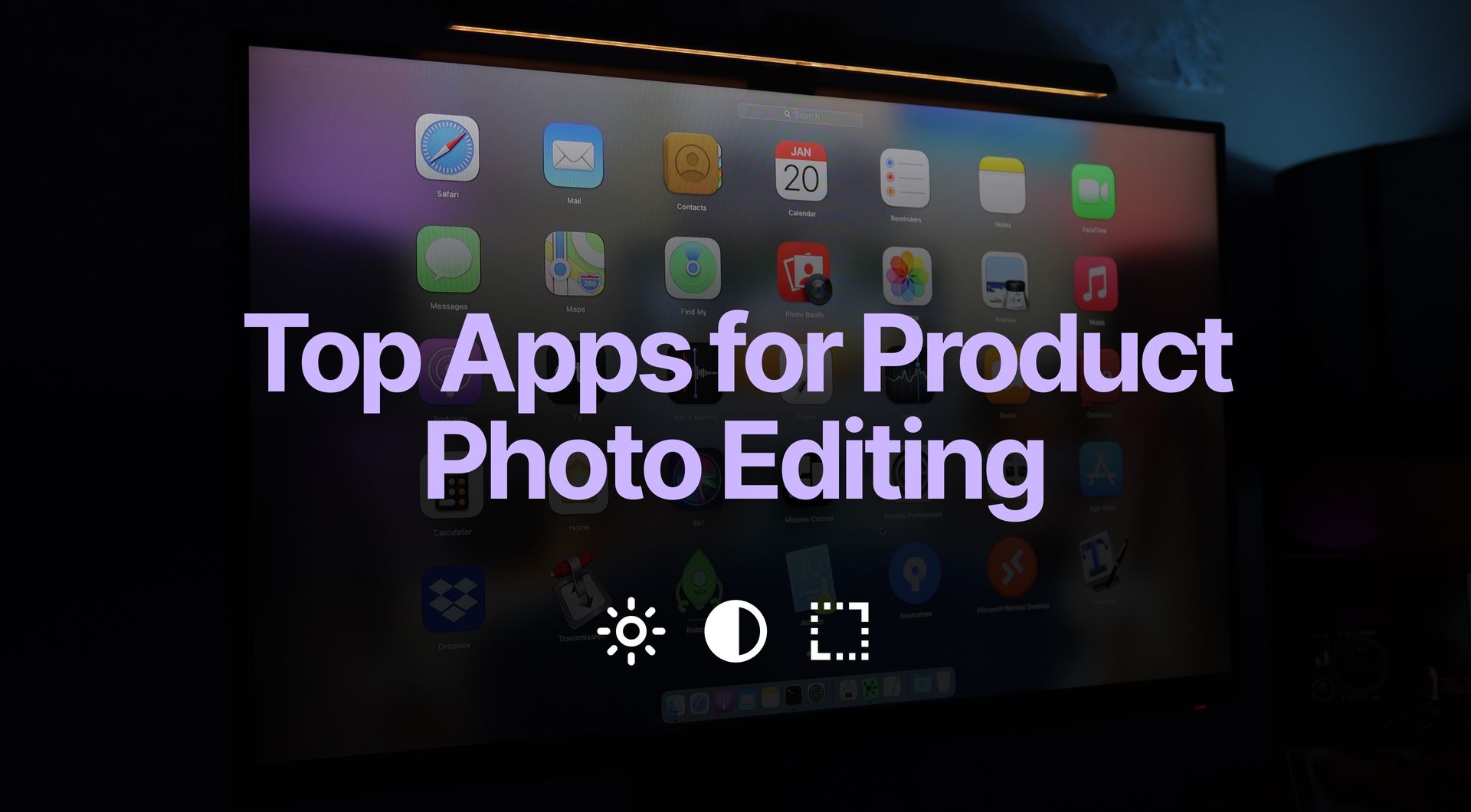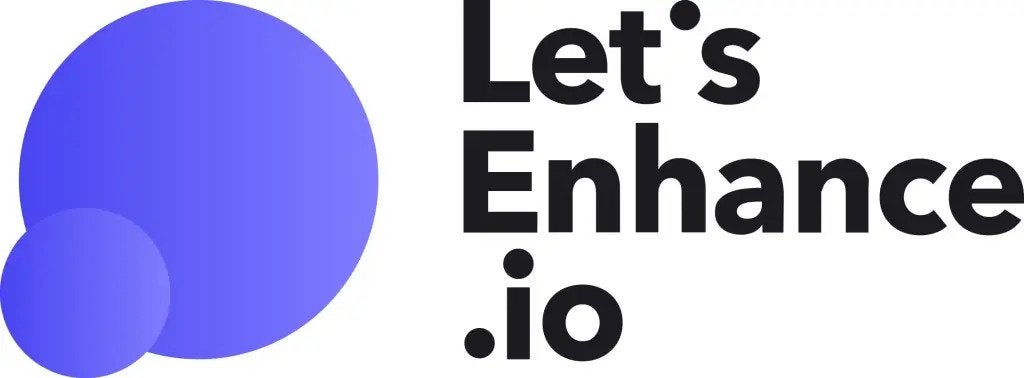Tech
Top 5 Product Photo Editing Apps

Creating product photos is a process that goes beyond photography skills and a good camera. There is a lot of editing and enhancement that goes into developing high-quality visuals for online vending and eCommerce. Luckily, some programs make it easier to create professional product photos.
Previously, we covered the best AI-powered image editing software on the market. This time, we’ll be looking at image editing apps with a focus on visual content that can help improve the performance of your products across online marketplaces.
Takeaways
- Claid.ai - Best product photo editor
- Let’s Enhance - Best general-purpose editor
- Photoshop - Best desktop photo editing software
- Snapseed - Best mobile photo editor
- Canva - The most versatile design and editing tool
Claid.ai - Best product photo editor

When it comes to editing, enhancing, and creating consistent quality among all your product photos, Claid.ai is what you're looking for. Claid.ai comes with all the tools you'll need to create high-quality product photos. It can automatically remove backgrounds, adjusts the padding and alignment to suit the biggest eCommerce marketplace standards, and perform all of these edits on a huge number of photos at once. And with the recent release of AI Photoshoot, users can also render backgrounds for their product photos to make them look more professional without any professional camera equipment or extensive knowledge of photo editing. This is what makes it the best app for product photos.
Pros:
Optimized for product photos: Unlike the other software on this list, Claid.ai was made with product photos in mind. This is why it offers a number of features that can benefit eCommerce vendors and online product managers.
Powerful AI: What gives AI-based image enhancement software the edge over traditional methods is accuracy. AI is exceptional at detecting visual defects or artifacts and fixing them within seconds. Additionally, unlike traditional methods of image enhancements, AI works exceptionally fast, able to produce incredible results within seconds.
Automatic background creator: Never worry about your product photos having stale or ugly backgrounds. The AI Photoshoot feature on Claid.ai will render a breathtaking background for your product images based on your own specifications.
Cons:
Works mostly for product photos: You can use Claid.ai for more than product photography or integrate it into your eCommerce strategy. However, Claid.ai is built with product photography in mind, so those looking for applications outside of this specific niche may find the platform limiting.
Requires an internet connection: Having server-side image processing means pretty much anyone without high-end PC hardware can enhance and upscale product images. The catch is that a stable internet connection is always required.
Best for:
Claid.ai is the perfect platform for eCommerce vendors and product managers who are looking to automate their user-generated content strategy. It offers a vast number of tools that are specifically designed with product photos in mind, as they can enhance and edit images to suit the requirements of any eCommerce marketplace and classifieds listing. Claid.ai can help you develop a brand identity by maintaining consistent visual content all across the board. To try it out, all you have to do is create an account on the official website.
Price:
You can start with Claid.ai with a free trail provided upon account creation. After this, you can continue using the tool for a monthly price of $15 for the Essentials plan.
2. Let’s Enhance - Best general-purpose editor

Let's Enhance is a powerful image-processing platform that can upscale, sharpen, restore, and enhance photos, digital art, and everything else in between. There are several upscale types to choose from as well as an assortment of lighting and color adjustments that can provide some basic but effective image editing functionality. The platform also comes with an onboard AI image generator so you can render, upscale, and enhance images all on one convenient platform.
Pros:
Easy to use: Let's Enhance is a visual enhancement and upscaling platform for pretty much anyone, regardless of their experience with image editing. This is why it was built with accessibility in mind and why it is so easy to use.
Versatile: There are many options to choose from when it comes to improving picture quality, upscaling, restoring, and rendering. Let's Enhance offers a slew of options and features to choose from, as well as templates for specific use cases.
All-in-one platform: You can upload, render, upscale, enhance, and download images all on a single platform. No shady links or new tabs are required. Simply upload a photo and have an improved version of it in a matter of seconds.
Cons:
Limited image editing tools: While it is an effective upscaler and offers options for different kinds of enhancements, Let's Enhance does not have image editing tools, such as cropping, changing the resolution (unless upscaling), and so on.
Not optimized for product photos: Though Let's Enhance works quite well, it is not an app for product photos and as a result may not have the necessary functions that eCommerce vendors and product managers are looking for.
Best for:
Let's Enhance is very useful for all-purpose upscaling and enhancements. Though it is limited in its image editing features and can process a handful of images at a time, it is still a very practical all-in-one platform and vendors can use it effectively to improve the quality of their product photos.
Price:
You can start with a free plan that offers 10 image-processing credits and storage for 6 months. Paid plans start at $9/month for 100 credits and go up to $24/month for 300 credits, both with priority enhancement, chat support, and access to new features. Unused credits roll over, and there's no watermark on your images with the paid plans.
3. Photoshop - Best desktop photo editing software

When we think of image editing, our brain immediately jumps to Photoshop. The first version of the software, Photoshop 1.0, was released back in 1990, over 3 decades ago. Since then, Photoshop has received tons of updates to the point where it is the go-to software for anyone working with visuals. It can do wonders for your product photos and if you know how to use its humongous roster of features and functions, it can turn any basic image into a gorgeous product photo.
Pros:
- Filled to the brim with features: If the UI of Photoshop seems a little daunting initially, that’s because it is. And for a good reason. Photoshop has been around for decades and throughout that time, it has developed an absolutely titanic roster of features and functions.
- Professional tools: Quantity is not the only advantage Photoshop brings to the table. All of the tools in its roster are professional-grade, optimized to handle any editing and enhancement task thrown its way.
- Tons of extra plugins: What makes Adobe's line of products so powerful is not only the tools provided by the developers but also third-party plugins, which exponentially increase the practical applications of Photoshop.
Cons:
- High learning floor and ceiling: While having tons of features is one of Photoshop’s main selling points, this is also what makes Photoshop hard to learn and even harder to master.
- Somewhat expensive: As with most Adobe products, Photoshop can be quite pricey. To use Photoshop for a full year, users may pay upwards of $377, though there are more affordable (not by much) plans in case this is too steep.
Best for:
If you are set on dedicating tons of hours to photo editing and learning how to use Photoshop, then it’s worth it. However, if you simply want to make slight enhancements to product photos to post online, then Photoshop is overkill.
Price:
The most basic subscription to Photoshop costs $31.49, though users can choose to subscribe to a yearly plan that will be slightly more affordable.
4. Snapseed - Best mobile photo editor

Developed by Google, Snapseed is one of the most popular mobile image editing apps money can buy, or actually not buy because Snapseed is entirely free. Snapseed comes with several tools such as the ability to control contrast and saturation, change the pose of the head (which the app automatically detects), brush tools for shading, and so much more.
Pros:
- Comprehensive results: One of its greatest advantages is how immediate the results are. Even those with little to no experience in visual editing can easily pick up on the nuances of each setting and enhancement.
- Non-destructive editing: When editing a product image on the small screen of a smartphone, it can be easy to make a mistake or two. Luckily, Snapseed features non-destructive editing functionalities, that can revert mistakes without indefinitely ruining the photo.
- Edit specific areas: Most mobile image editors will affect the entire image. However, the advantage of using Superseed is that it allows you to target specific areas, instead of the entire image in its entirety.
Cons:
- Small screen: The magic is in the detail when it comes to product images, which is hard to see when working with a small screen. Though there is the option of projecting the phone onto a larger screen, at that point, why not simply use a desktop application?
- Few features: While there are enough tools and functions in Snapseed that those without much experience in visual editing can learn a thing or two, for those with more experience in the field, the application is very limiting.
Best for:
While Snapseed won’t replace any of the desktop photo editing software, it certainly holds its own as a free photo editor app. It offers a wide array of tools that users can play around with and get used to. So, with enough time, product images can be taken, edited, and posted using the same mobile device.
Price:
Completely free to download and use.
5. Canva - The most versatile design and editing tool

When it comes to Canva, user-friendliness is the name of the game. Canva comes packed (and we really mean packed) with a ton of visual design and editing tools, along with a metric ton of presets that can be used to create visually striking product images.
Pros:
- Extremely user-friendly: So long as you know how to use a mouse, you can easily create unique designs using Canva.
- Tons of templates: There are vast presets and templates to select from that will automatically provide the exact canvas size that is needed for any particular design.
- Limitless design elements: Press on the elements tab to find limitless premade visual elements that can be used in product photos to introduce some brand iconography and aesthetics.
Cons:
- Few enhancement and editing tools: While Canva offers tons of tools, assets, and elements for designers to create unique visuals with, photo enhancement and editing tools are very basic and limited.
- Limited design flexibility: Those preset elements we mentioned earlier, that’s exactly what they are: presets. Most of the visual assets and elements can only be resized and recolored and that’s pretty much it.
Best for:
Canva can be pretty handy for basic product image designs and the creation of product photo templates. And while Canva is not the best app for product photography, it can still prove to be very useful for product managers looking to maintain brand consistency.
Price:
You can start with a free plan that offers 10 image-processing credits and storage for 6 months. Paid plans start at $9/month for 100 credits and go up to $24/month for 300 credits, both with priority enhancement, chat support, and access to new features. Unused credits roll over, and there's no watermark on your images with the paid plans.
FAQ
Here are some common questions about product photo editing software.
What is the best app to edit product photos?
We highly recommend using Claid.ai. It is an AI-based editing platform for product visual content which can enhance, upscale, standardize, and render product images meant for a vast number of online marketplaces and product listings. It's easy to use and can be incredibly effective even in the hands of those with little to no experience in product photography or visual editing.
How can I edit my product photos?
Yes, you absolutely can edit your own product photos. Learning how to edit product photos can be advantageous in a number of ways, as you can have greater control over the user-generated content that is produced for your brand. It's also a very useful skill to have in general, as it allows you to learn a challenging craft. However, learning how to edit visuals can take quite a while if you're using professional software like Photoshop. If this is something you don't have time for, then we highly recommend using platforms with a more simplified visual editing process, such as Claid.ai, Let's Enhance, or Snapseed.
How do you make product photos look good?
There are a lot of things that factor into a professional product image. The most fundamental one is resolution and DPI, as this determines the overall quality of the image, not just specific aspects of it. Background is also an important part of product photography. In some cases you should have a background, as you may want to set a scene and atmosphere. However, oftentimes, its easier to simply leave it blank. Check out our guide below on how to do this automatically with AI Photoshoot on Claid.ai. Finally, there's the question of standardizing the visual specifications, as in the pixel count, the padding, and the size of the image itself. These depend on which marketplace or online listing you'll be posting to and you can check out our guide on how to optimize product visuals for the most popular eCommerce marketplaces and listings.
What app do most influencers use to edit photos?
This is a tricky question, as it depends on the influencer, the type of content they make, and what they prioritize in their visuals. As mentioned above, Snapseed is a fantastic editing app for mobile devices. But there are metric tons of other apps to choose from and each influencer uses (and endorses) their own unique ones.
Which photo editing app is best and free?
Claid.ai and Let's Enhance offer free credits for those interested in editing a few photos, however if you're looking for a completely free option, Snapseed is a great option, with the downside of it being exclusively for mobile devices.
What photo editing app do professionals use?
This depends on what the professional does, as photo editing is a very broad craft. However, in general, most professional photo editors use Photoshop, Lightroom, or Luminar Neo. These are perfect for professional image editors as they have all the necessary tools and functions for all kinds projects.
What is the easiest photo editor for beginners?
Professional software like Photoshop can be very difficult to use for those without much experience in visual editing. As mentioned above, Claid.ai, Let's Enhance, Canva, and Snapseed are very user-friendly. You can use them effectively with little to no prior experience in visual content editing and produce amazing results in a matter of seconds.

Claid.ai
January 23, 2025